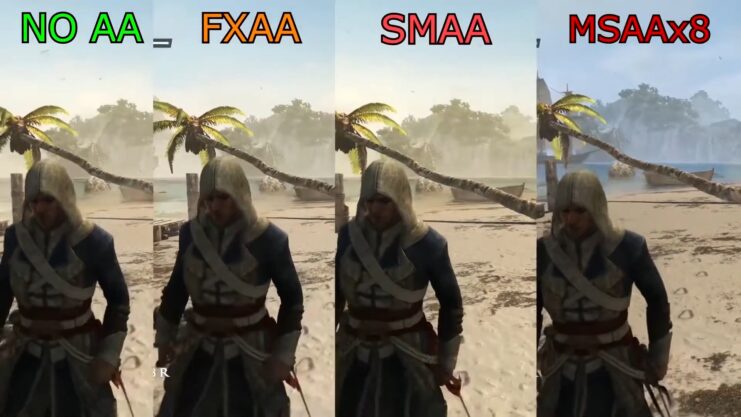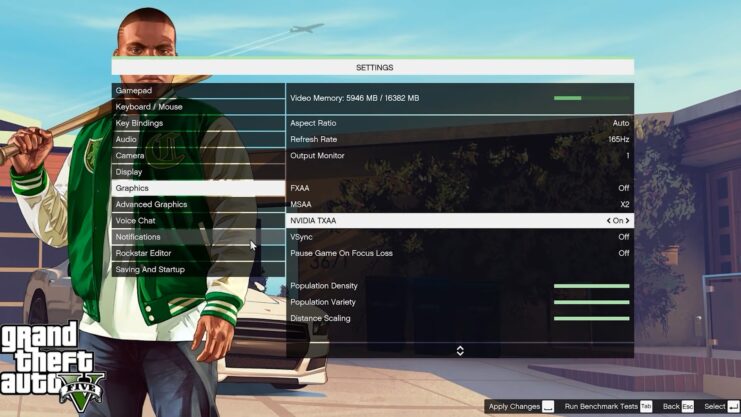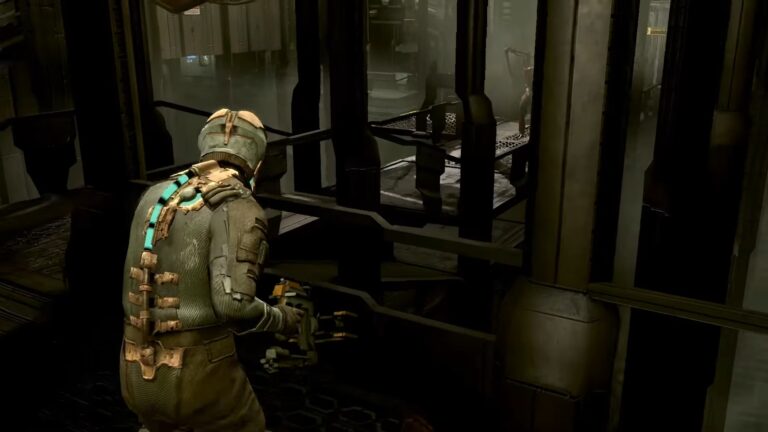In the realm of digital graphics, the term “anti-aliasing” is frequently encountered. But what exactly is it, and why is it so crucial? This article explores the concept of anti-aliasing, its significance, and the ongoing debate between FXAA and SMAA.
The Basics of Anti-Aliasing
In digital signal processing, spatial anti-aliasing is a technique employed to minimize distortion artifacts, known as aliasing, when representing a high-resolution image at a lower resolution.
This technique is prevalent in various domains, including digital photography, computer graphics, and digital audio. It involves the removal of signal components that exceed the frequency that the recording or sampling device can accurately resolve.
This elimination occurs before the signal is (re)sampled at a diminished resolution. If this step is skipped, it can lead to undesirable artifacts, such as the appearance of black-and-white noise.
Its Applications
In the realm of digital photography, optical anti-aliasing filters made of birefringent materials are used to smooth the signal in the spatial optical domain. This filter essentially blurs the image slightly, reducing its resolution to match or even falling below the capabilities of the digital sensor.
In computer graphics, this technique enhances the appearance of jagged polygon edges, commonly referred to as “jaggies.” This smoothing effect, however, comes at a performance cost for the graphics card and consumes more video memory.
The level of anti-aliasing applied determines the smoothness of polygon edges and the amount of video memory used.
FXAA vs SMAA: The Showdown
- Fast Approximate Anti-Aliasing (FXAA): FXAA is a screen-space algorithm. It’s a type of anti-aliasing that smoothens the image by searching for high-contrast edges in the scene and then blurring them. This method is relatively fast and doesn’t require large amounts of memory. However, one of its drawbacks is that it can make the image appear a bit blurry, especially when viewed at higher resolutions.
- Subpixel Morphological Anti-Aliasing (SMAA): On the other hand, SMAA is another post-processing method. It combines various techniques to provide high-quality anti-aliasing without the performance hit. SMAA offers better edge detection than FXAA, ensuring that the edges are smoother and more defined. It also avoids the blurring issue commonly associated with FXAA.
Which One Should You Use?
The choice between FXAA and SMAA largely depends on the specific requirements of a project.
If performance is a priority and slight blurring isn’t a concern, FXAA might be the way to go. However, for projects where image quality is paramount, SMAA, with its superior edge detection and minimal blurring, would be more suitable.
The Complexities of Anti-Aliasing Methods

Anti-aliasing techniques, such as MSAA, SSAA, FXAA, and TXAA, are all designed to combat the jagged edges, commonly referred to as “jaggies,” that can appear in digital graphics.
The root cause of these jaggies is the discrepancy between the continuous definition of a scene in three-dimensional space and the discrete two-dimensional array of pixels on a display.
SSAA (Super Sampling AA)
SSAA is one of the most direct methods to combat jaggies. Using 4xSSAA as an example, if the final screen output resolution is 800×600, 4xSSAA would first render to a 1600×1200 resolution buffer. This buffer, which is four times larger, is then downsampled to 800×600.
While this method is mathematically perfect for anti-aliasing, it demands four times the computational load for rasterization and shading, and the render target size also increases fourfold.
MSAA (Multi-Sampling AA)
MSAA is a more intelligent approach that only multi-samples during the rasterization phase. It calculates multiple coverage samples to determine if a triangle is covered by a pixel. However, during the pixel shading phase, each pixel is still calculated only once.
Modern GPUs have implemented this algorithm in hardware, making it much faster than SSAA, especially when shading computations outweigh rasterization.
Post Processing AA Techniques: FXAA & TXAA
Due to some compatibility issues of MSAA with deferred shading frameworks, modern engines often use post-processing AA techniques. These techniques, including FXAA and TXAA, rely entirely on image processing methods and are not dependent on any specific hardware.
They can be quite effective, even if they sometimes employ “hacky” methods to achieve the desired results.

Making the Right Choice
For gamers and developers, the choice between these techniques often boils down to a balance between performance and visual quality. While SSAA offers the highest quality, it’s also the most computationally intensive.
MSAA offers a good balance, while FXAA and TXAA can provide decent results with less performance overhead. Ultimately, the best choice depends on the specific requirements of a project and the capabilities of the hardware it’s running on.
FAQs
Why is anti-aliasing important in digital graphics?
This technique is crucial because it smoothens jagged edges, commonly known as “jaggies,” in digital graphics. These jaggies can detract from the visual quality of an image, making it appear less realistic and more pixelated.
By applying anti-aliasing techniques, visuals become more refined, leading to a more immersive and visually pleasing experience.
Are there any downsides to using anti-aliasing?
Yes, while it improves visual quality, it can also be computationally intensive. This means that it can reduce the performance of a game or application, especially on older or less powerful hardware.
Some methods can also introduce blurring or other visual artifacts if not implemented correctly.
Can I turn off anti-aliasing if I’m facing performance issues?
Absolutely! Many games and software applications allow users to adjust or turn off these settings. Disabling or reducing anti-aliasing can lead to performance improvements, but it may also result in more visible jagged edges in the graphics.
Is this technique only used in video games?
No, while anti-aliasing is commonly associated with video games, it’s also used in other domains like digital photography, video rendering, and any other field where digital graphics are displayed and where the appearance of jagged edges can be an issue.
How do I know which anti-aliasing technique is best for my needs?
The best technique often depends on the specific requirements of your project and the capabilities of your hardware. For high-end graphics and maximum visual quality, techniques like SSAA might be preferred.
However, for a balance between performance and quality, MSAA or post-processing techniques like FXAA might be more suitable.
Final Words
Anti-aliasing ensures that our visual experiences, whether in games, movies, or digital art, are smooth and free from distracting jagged edges. While each technique has its merits and drawbacks, the core objective remains consistent: to deliver a seamless and immersive visual experience.
Although I’ve experimented with various techniques, SMAA has been my preferred choice for its balance of clarity and performance. Whether you’re a gamer, a digital artist, or just someone who appreciates high-quality visuals, understanding the role of anti-aliasing is crucial in today’s digital age.







